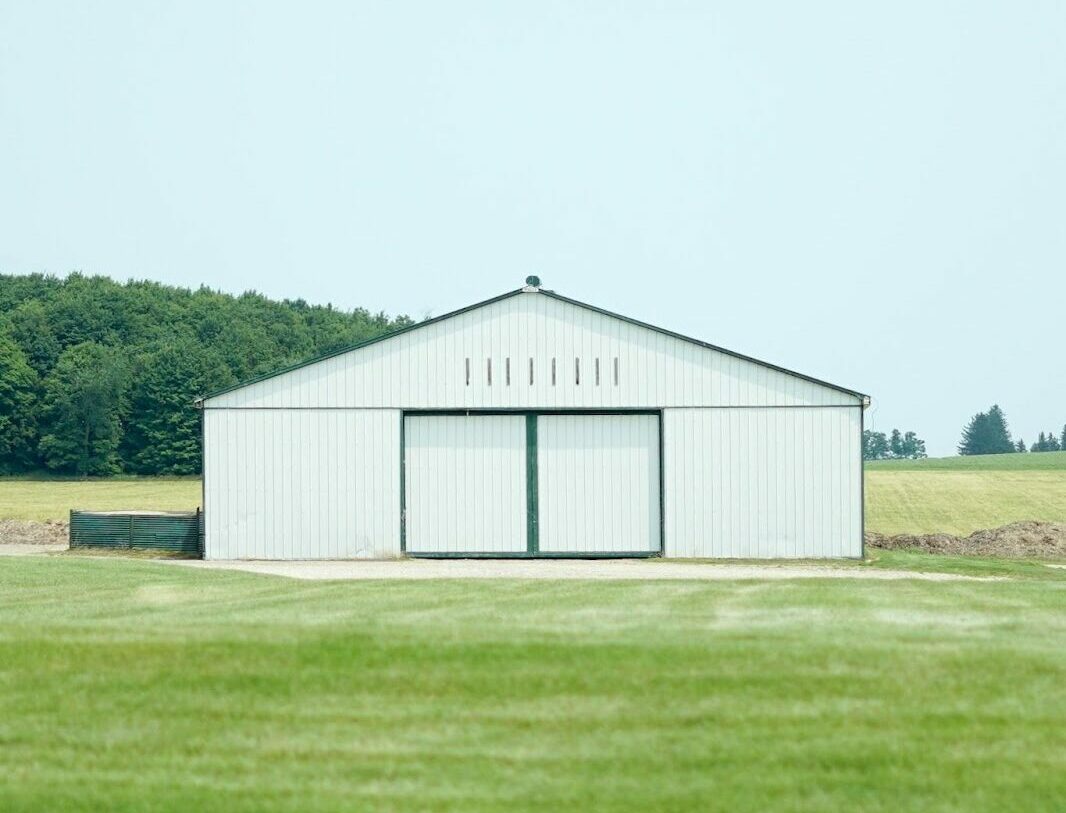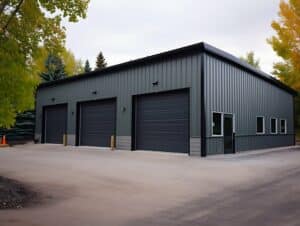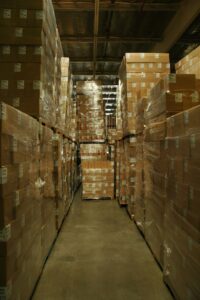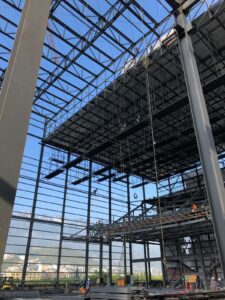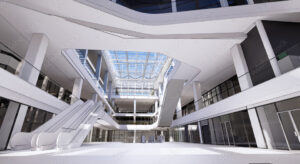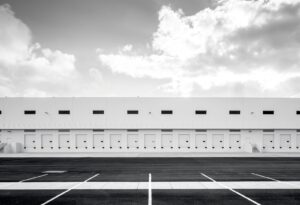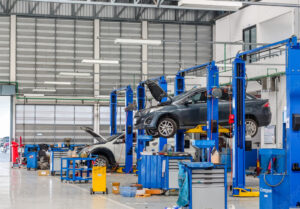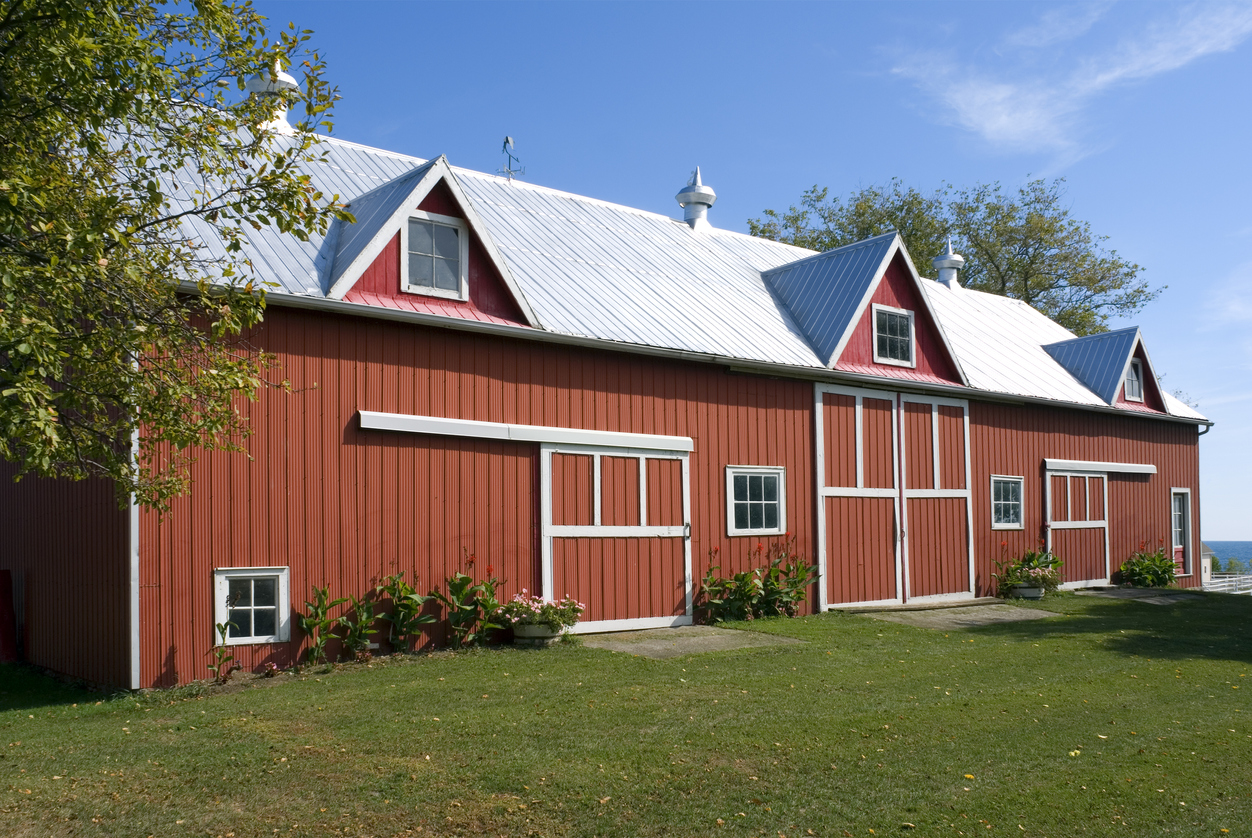Agricultural buildings play a vital role in the farming industry, providing a functional and secure space for storing equipment, housing livestock, and conducting various agricultural activities. When it comes to constructing agricultural buildings, steel is a popular choice due to its durability, versatility, prices, and cost-effectiveness.
In this price guide, we will explore the factors that influence the prices of steel agricultural buildings and provide insights into budgeting and financing options. Let’s dive in and understand the basics of steel agricultural buildings.
Table of Contents
- Understanding the Basics of Steel Agricultural Buildings
- Factors Influencing the Prices of Steel Agricultural Buildings
- Price Comparison: New Construction vs. Renovation
- Maintenance Costs for Steel Agricultural Buildings
- Financing and Insurance for Steel Agricultural Buildings
- Conclusion
- Frequently Asked Questions
Understanding the Basics of Steel Agricultural Buildings
Steel agricultural buildings are structures made primarily of steel components such as columns, beams, and trusses.
These buildings are designed to withstand the demanding conditions of agricultural operations while providing ample space and functionality.

Whether used for hay storage, machinery sheds, or livestock housing, steel structures offer numerous benefits to farmers and ranchers.
When it comes to steel agricultural buildings, there are a few key features that make them an ideal choice for farmers. Firstly, durability is a major advantage.
Steel is highly resistant to moisture, pests, and fire, ensuring the longevity of the structure. This means that farmers can have peace of mind knowing that their valuable equipment, livestock, and crops are protected from the elements.
Another notable feature of steel agricultural buildings is their flexibility. Farmers often face changing needs and requirements as their operations evolve.
With steel structures, modifications, and expansions can be easily made in the future. This adaptability allows farmers to maximize the use of their buildings without the hassle of major renovations or costly construction projects.
Check out: Breaking Down The Costs Of A Metal Barn
Types of Steel Agricultural Buildings
Steel agricultural buildings are popular for their durability, cost-effectiveness, and versatility. Here are common types of steel agricultural buildings:
- Barns: This structure is primarily used for housing livestock, storing hay and feed, as well as sheltering farm equipment. It often features large open spaces, lofts for hay storage, and partitioned areas for different types of livestock.
- Equipment Storage Buildings: The purpose of the facility is to provide secure storage for various agricultural machinery, including tractors, combines, plows, and more.
- Livestock Shelters: The purpose is to safeguard animals from severe weather conditions by providing a controlled environment optimal for raising livestock.
- Dairy Buildings: Dairy buildings are specialized structures designed specifically for dairy farming operations, encompassing milking parlors and milk storage facilities.
- Greenhouses: They are designed to provide a controlled environment for growing crops year-round. They feature transparent or translucent roofing for optimal sunlight exposure, climate control systems to regulate temperature and humidity, and automated irrigation systems for efficient watering.
- Processing Facilities: They are specifically designed for the processing and packaging of agricultural products. These facilities are characterized by their sanitary surfaces, climate control, and specialized equipment tailored for processing tasks.
Benefits of Choosing Steel for Agricultural Buildings
Opting for steel agricultural buildings offers several advantages that can greatly benefit farmers and ranchers. One of the primary advantages is cost-effectiveness.
Steel buildings often have lower construction costs compared to traditional materials like wood or concrete. This means that farmers can allocate their resources more efficiently, investing in other essential aspects of their operations.
In addition to cost-effectiveness, steel agricultural buildings also offer shorter construction times. The prefabricated components of steel buildings can significantly reduce construction time, allowing farmers to use their new structures sooner.
This means that farmers can quickly start utilizing their buildings for storage, shelter, or other agricultural purposes, enhancing their productivity.
Another advantage of steel agricultural buildings is their low maintenance requirements. Steel structures are known for their durability and resistance to wear and tear. This translates to minimal maintenance needs, saving farmers both time and money in the long run.
With less time spent on maintenance, farmers can focus on their core activities and maximize their productivity.
Energy efficiency is yet another benefit that steel agricultural buildings offer. With proper insulation, steel buildings can help reduce heating and cooling costs throughout the year. This is especially important in regions with extreme weather conditions, as farmers can maintain comfortable temperatures for their livestock or stored crops without incurring excessive energy expenses.
Moreover, steel agricultural buildings provide farmers and ranchers with durable, flexible, and customizable structures that offer numerous benefits.
From cost-effectiveness and shorter construction time to low maintenance requirements and energy efficiency, steel buildings are a practical choice for those in the agricultural industry. With the ability to withstand demanding conditions and accommodate changing needs, steel agricultural buildings are an investment that can greatly enhance the efficiency and productivity of farming operations.
Did You Know?
The number of farms in the United States varies from year to year. According to the 2023 estimates from the National Agricultural Statistics Service (NASS), there were approximately 1,894,950 farms in the US. These farms covered a total of 878,560,000 acres of land, with an average farm size of 464 acres.
Factors Influencing the Prices of Steel Agricultural Buildings
Several factors contribute to the overall prices of steel agricultural buildings. Understanding these factors can help farmers estimate their budget accurately:
Building Size and Dimensions
When considering the prices of steel agricultural buildings, several factors come into play. One crucial determinant is the building size and dimensions.
Generally, larger buildings tend to cost less per square foot. Despite the lower cost per square foot, the overall price tag of these larger structures will be significantly higher than smaller buildings.
Buildings with unusual dimensions or heights can see an increase in costs, as these features may require additional materials or specialized construction methods to accommodate the unique requirements.
Customization and Features
The inclusion of add-ons such as specialized doors, windows, ventilation systems, or internal structures can substantially increase the overall price.
These elements allow for a tailored solution to specific agricultural needs but come at an additional cost.
Materials Quality
One of the primary factors is the quality of materials used in the construction of these buildings. Specifically, the gauge of steel, which indicates the steel’s thickness, plays a significant role.
Buildings constructed with higher gauge steel, meaning the steel is thicker, tend to cost more. This is because thicker steel offers greater durability and structural integrity, making the building more resilient to various stressors like weather and heavy use.
Additionally, the choice of insulation, roofing materials, and other finishes will also influence the overall material costs.
Opting for energy-efficient materials may result in higher upfront costs but can lead to long-term savings through reduced energy consumption.
Check out: Exploring Barn Roof Types And Materials
Site Preparation
Costs can vary dramatically based on the current condition of your land and any necessary grading or foundation work.
This initial step is crucial for the successful installation of the building and can substantially impact the overall budget.
Labor and Installation Costs
Labor and installation costs play a significant role in the overall prices of steel agricultural buildings. The expertise and experience of the construction team can impact the efficiency and quality of the final structure.
Factors such as project complexity, location, and the availability of skilled labor can all affect labor costs. Hiring experienced contractors or construction companies specializing in steel buildings is crucial to ensure the proper assembly and installation of the structure.
Investing in skilled labor can help prevent costly mistakes during construction and ensure the longevity of the agricultural building.
Price Comparison: New Construction vs. Renovation
When considering steel agricultural buildings, it’s essential to compare the prices of new construction versus renovating existing structures.
Making the right decision between these two options can significantly impact a farmer’s budget and operational efficiency.
Before diving into the financial aspects, it’s crucial to consider the environmental impact of both choices.
Opting for renovation over new construction can be a more sustainable choice, as it reduces the demand for new raw materials and minimizes construction waste.
By repurposing existing steel buildings, farmers can contribute to environmental conservation and sustainable practices within the agricultural industry.
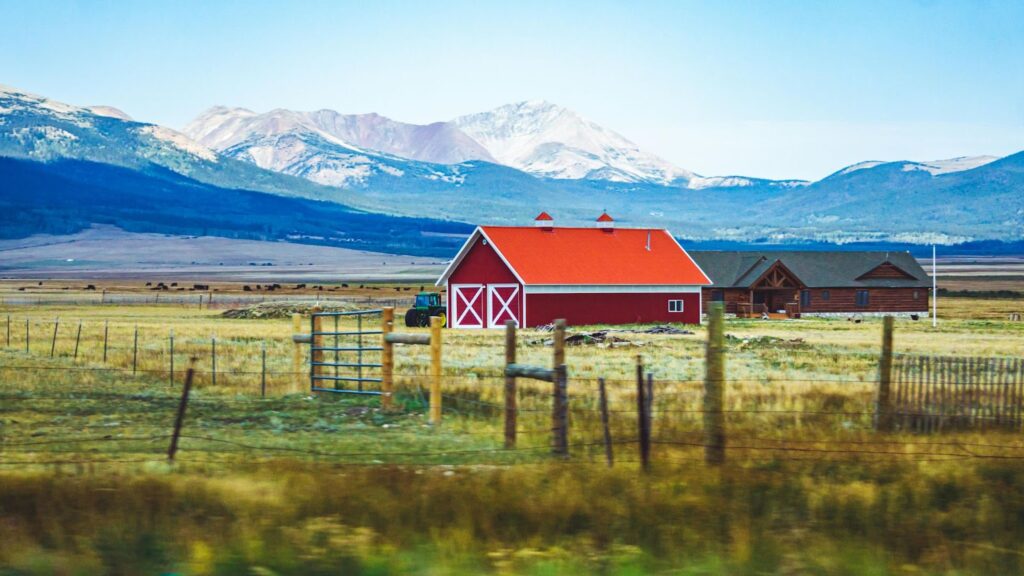
Cost of New Steel Agricultural Building Construction
The cost of new steel agricultural building construction depends on various factors discussed earlier, such as material costs, labor, size, and design complexity.
By carefully evaluating these factors and working closely with contractors, farmers can estimate the cost of constructing a new building tailored to their specific needs.
Additionally, investing in new construction provides farmers with the opportunity to incorporate the latest technological advancements and design features, enhancing the overall functionality and efficiency of the building.
Renovation Costs for Existing Steel Buildings
For farmers who already own steel buildings, renovating and repurposing them can be a cost-effective solution. Renovation costs will vary depending on the extent of the modifications required, which may include structural repairs, upgrading insulation, or adding new features.
It’s advisable to consult with experts to assess the feasibility and estimated costs of renovating existing steel agricultural buildings.
Moreover, renovating existing structures can preserve the historical value and unique architectural characteristics of the buildings, adding a touch of heritage and character to the farm.
Maintenance Costs for Steel Agricultural Buildings
Maintaining steel agricultural buildings is an essential aspect of ensuring the longevity and functionality of these structures. While steel is known for its durability, regular maintenance is still necessary.
Steel agricultural buildings are subject to various environmental factors such as weather conditions, moisture, and pests, which can impact their structural integrity over time.
Therefore, implementing a comprehensive maintenance plan is crucial to address these challenges and preserve the building’s quality.
On average, maintenance costs can be around 1% to 3% of the total cost of agricultural buildings annually. This includes routine tasks such as cleaning, inspecting, and making minor repairs.
Regular Maintenance and Its Costs
Regular maintenance tasks for steel agricultural buildings may include routine inspections, cleaning, and addressing any minor repairs promptly.
These maintenance activities help prevent larger issues and contribute to the long-term integrity of the structure. The costs associated with regular maintenance are relatively minimal compared to the potential expenses of major repairs or replacements.
Additionally, investing in high-quality protective coatings can help extend the lifespan of steel agricultural buildings by providing an extra layer of defense against corrosion and wear.
These coatings not only enhance the building’s aesthetics but also contribute to its overall durability and longevity.
Long-Term Maintenance Expenses
Over time, steel agricultural buildings may require more significant maintenance or upgrades. This could include roof replacement, repainting, or structural modifications. While these expenses may arise after several years, planning for them in advance can prevent unexpected financial burdens.
Furthermore, incorporating energy-efficient features during maintenance or upgrades can lead to long-term cost savings by reducing utility expenses.
Upgrading insulation, installing energy-efficient lighting, or implementing renewable energy sources can not only lower operational costs but also contribute to a more sustainable agricultural operation.
Financing and Insurance for Steel Agricultural Buildings
Financing options and insurance considerations are crucial when budgeting for steel agricultural buildings.
Building a steel agricultural structure requires careful planning and financial management to ensure a successful and cost-effective project.
Financing Options for Steel Agricultural Buildings
Farmers can explore various financing options, including loans, leases, or grants, to fund their steel agricultural building projects.
Securing the necessary funds is essential to cover construction costs, equipment purchases, and other expenses.
It’s important to research and compare different financial institutions and programs to find the best terms and interest rates that suit individual needs.
When considering financing options, farmers should also take into account the repayment terms and the impact on their overall financial situation.
Consulting with agricultural lending experts can provide valuable insights and guidance throughout the financing process.
These experts can help farmers navigate the complexities of loan applications, assess their financial capabilities, and develop a repayment plan that aligns with their long-term goals.
Insurance Costs and Considerations
Insuring steel agricultural buildings is essential to protect against potential damage or loss. While steel structures are known for their durability, unforeseen events such as natural disasters, fire, or theft can still pose risks.
Insurance coverage provides farmers with peace of mind, knowing that they are financially protected in case of any unfortunate incidents. Insurance costs will depend on factors such as the value of the structure, its intended use, location, and additional coverage requirements.
Farmers should carefully assess their insurance needs and work with insurance providers specializing in agricultural properties.
These providers can help farmers understand the different coverage options available and find the most cost-effective solutions.
When selecting an insurance policy, farmers should consider the level of coverage needed for their specific agricultural operations.
This may include coverage for equipment, livestock, and crops, in addition to the building itself.
Working closely with insurance experts will ensure that farmers have a comprehensive insurance plan that adequately protects their assets.
Expanding a steel agricultural building project involves more than just constructing the physical structure. It requires careful consideration of financing options and insurance coverage.
By researching and comparing different financial institutions, consulting with agricultural lending experts, and working with insurance providers specializing in agricultural properties, farmers can make informed decisions that align with their needs and financial capabilities.
Conclusion
Constructing steel agricultural buildings requires careful consideration of various factors that influence their cost.
By understanding the basics of steel structures, comparing new construction and renovation costs, budgeting for maintenance, and exploring financing and insurance options, farmers can make informed decisions that align with their needs and financial capabilities.
Remember, working with reputable contractors and professionals in the field will ensure the successful realization of durable and cost-effective steel agricultural buildings.
SteelCo has more than 23 years of experience in dropshipping customizable steel building kits for agricultural buildings and roofing needs nationwide.
Our team of experts with 100+ years combined experience can provide specialized assistance in helping clients with initial concepts/design.
We also help navigate construction timelines and provide stamped engineering plans to simplify the process of obtaining necessary building permits and licenses. Learn more about our steel agricultural buildings.
—————————-
Frequently Asked Questions
How much does a steel agricultural building cost per square foot?
Costs typically range from $17 to $20 per square foot for building materials, depending on the type and complexity of the building. Basic storage structures are on the lower end, while specialized facilities are on the higher end.
Are steel buildings cheaper than traditional wood structures?
Initially, steel buildings may have a higher upfront cost. However, they often prove more cost-effective in the long run due to lower maintenance costs, longer lifespan, and better insurance rates.
How long does it take to construct a steel agricultural building?
Construction time varies but is generally faster than traditional building methods. A basic structure might take 1-3 weeks, while more complex buildings could take 2-3 months.
Do I need a concrete foundation for a steel agricultural building?
While not always necessary, a concrete foundation is recommended for most permanent structures. This adds to the overall cost but provides stability and longevity.
How much can I save by choosing a pre-engineered building versus a custom design?
Pre-engineered buildings can be 20-30% cheaper than fully custom designs. However, the exact savings depend on your specific needs and the level of customization required.
Are there tax incentives available for steel agricultural buildings?
Tax incentives and rebates may be available at the federal, state, or local level for agricultural buildings, especially if they include energy-efficient features. Consult with a tax professional and check with local authorities for available programs.

